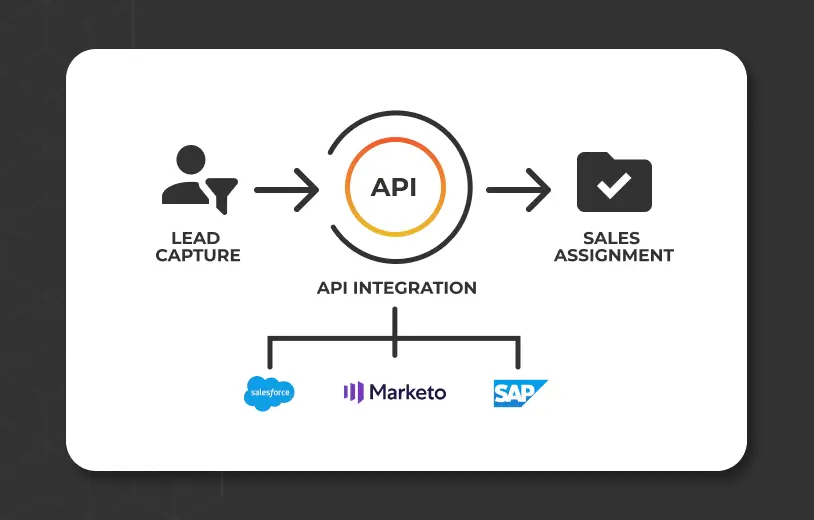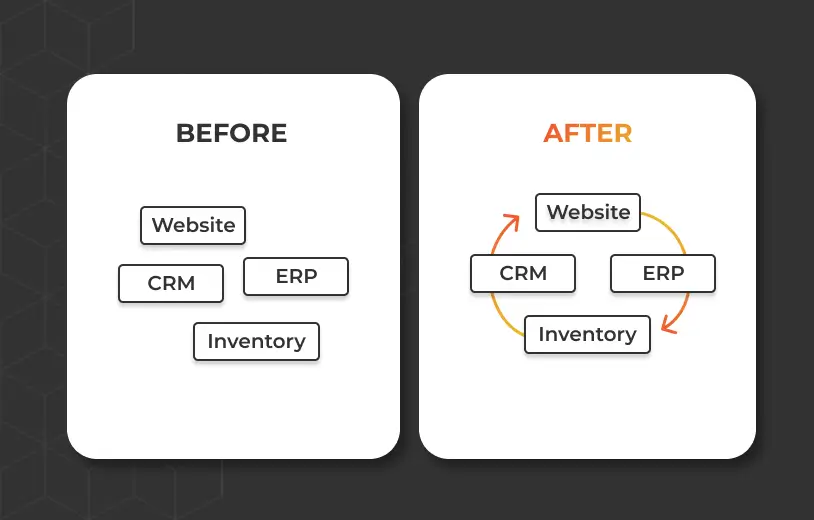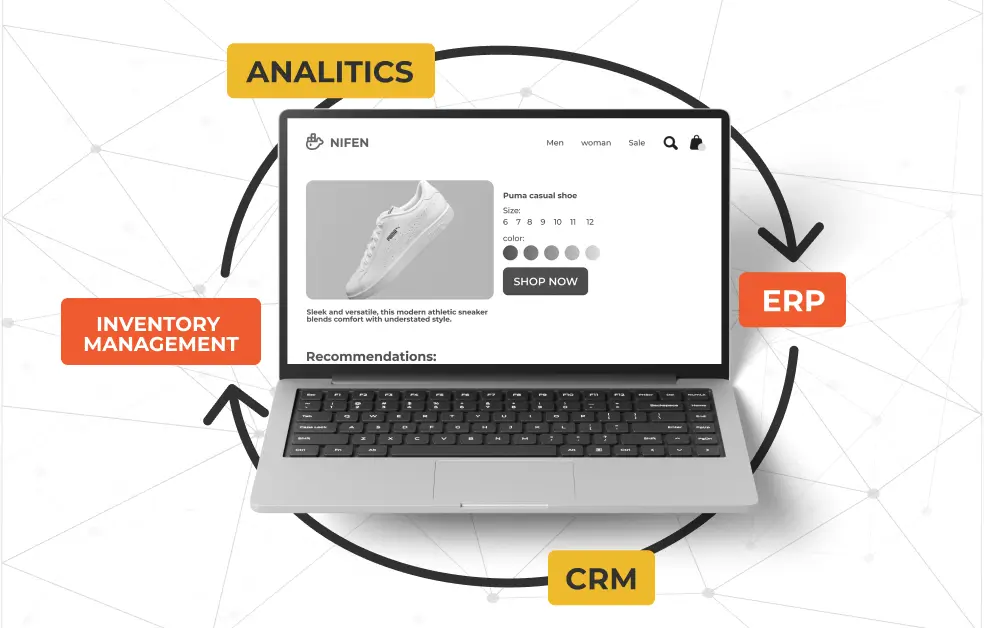Key Takeaways
- Creates a Single Source of Truth: A proper API integration strategy syncs data across platforms (e.g., CRM, ERP, eCommerce), eliminating data silos and ensuring consistency and accuracy.
- Enhances User Experience (UX): APIs enrich your website with dynamic, real-time information and functionality from other services, such as live shipping rates, interactive maps, or personalized content, creating a more valuable and engaging experience.
- Automates Business Processes: By connecting disparate systems, API integrations automate manual tasks like data entry, lead routing, and inventory updates, saving thousands of man-hours and reducing the risk of human error.
Think of your enterprise website. Is it an active, intelligent hub of your business operations, or is it a static digital brochure?
In the modern economy, a website that operates in isolation, disconnected from your core business systems, is an underperforming asset.
The critical technology that transforms a standalone site into a dynamic, integrated powerhouse is the Application Programming Interface, or API.
An API is a set of rules and protocols that allows different software applications to communicate with each other; it’s the universal translator of the digital world.
A strategic API integration uses these APIs to connect your website to essential third-party platforms, such as your Salesforce CRM, Marketo marketing automation software, or NetSuite ERP, creating a seamless and automated flow of data.
For enterprises, this isn’t a technical novelty; it’s a strategic imperative for efficiency, scalability, and providing a superior customer experience.
1. Unlocking a Richer, More Dynamic User Experience

Today’s users expect dynamic, personalized, and real-time experiences.
A website that can’t provide this feels dated and disconnected. APIs are the key to delivering these rich features by pulling data from specialized external services directly onto your site.
Consider the possibilities:
- eCommerce: Integrating a shipping provider’s API to display real-time, accurate shipping rates directly in the shopping cart.
- Real Estate/Logistics: Embedding an interactive Google Maps API that shows property locations or tracks fleet movements.
- SaaS/Finance: Connecting a scheduling API like Calendly for booking demos or a financial data API like Plaid for account verification.
Without API integration, these experiences are impossible. By leveraging them, you transform your website from a simple information source into a feature-rich, interactive tool that provides immense value to your users.
2. Automating Workflows and Eradicating Inefficiencies
How many hours does your team spend on manual data transfer?
Manually exporting leads from your website’s content management system (CMS) and importing them into your customer relationship management (CRM) platform is not just tedious—it’s inefficient and prone to costly human error.
This is where professional api integration services provide one of their most significant returns on investment. A well-executed integration strategy automates these critical handoffs between systems:
- Sales & Marketing Alignment: A new lead from a website form can instantly and automatically create a new contact record in your CRM (like Salesforce or HubSpot), assign it to the correct sales representative based on territory or industry, and enroll them in a relevant marketing automation sequence.
- Inventory & Order Management: For an eCommerce platform, an API can connect your website’s storefront directly to your Enterprise Resource Planning (ERP) system. When a customer places an order, the inventory is updated in real-time across the entire organization, eliminating the risk of selling out-of-stock items.
- Content Synchronization: Update content in a single headless CMS and have an API push those updates simultaneously to your website, mobile app, and internal knowledge base.
This level of automation frees up your team to focus on high-value strategic work instead of mundane data entry, directly impacting productivity and profitability.
3. Establishing a Single, Authoritative Source of Truth

Data silos are the enemy of effective business intelligence.
When your customer data in your CRM conflicts with the data in your email marketing platform, which one do you trust? Inconsistency breeds confusion and undermines strategic decision-making.
A comprehensive API integration strategy breaks down these silos. By designating a primary system of record (often the CRM or ERP) and using APIs to sync data across all other connected platforms, you establish a single, reliable source of truth.
This ensures that every department, from sales and marketing to customer support and fulfillment, is working with the same, up-to-the-minute information. This data integrity is foundational for accurate reporting, reliable forecasting, and creating the truly personalized customer experiences that drive loyalty.
The Foundation for a Scalable Future
Choosing the right partner for API integration services is crucial.
A low-quality, poorly documented integration creates an unstable connection. These fragile systems often break with minor software updates, causing the same—or more—disruption than having no integration in the first place.
A strategic approach, however, builds a robust and scalable digital architecture.
It allows your business to easily adopt new technologies and pivot to meet new market demands without having to rebuild your entire digital ecosystem from scratch. Your website becomes a flexible, future-proofed platform ready to connect to the next essential tool your business needs to thrive.
In short, API integrations are the invisible, workhorse technology that powers modern digital business. They are the connections that turn a simple website into the intelligent, automated, and responsive core of your entire enterprise.
Is your website working in a silo? Fahrenheit Marketing provides expert API integration services to connect your critical business systems and unlock true operational efficiency. Contact us today to discuss your integration strategy.
